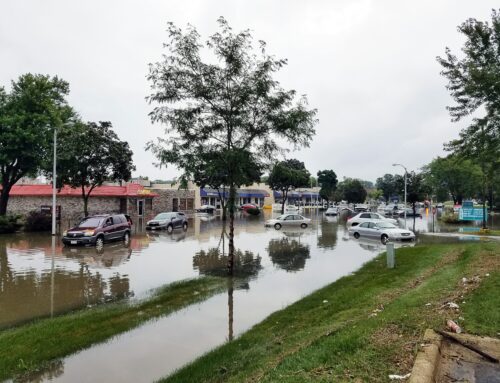Sometimes (often?) reading legislation takes a strong stomach. Thus, it was with trepidation that we took a break from this week’s debate on the National Defense Authorization Act and spending bills 
WRDA directs projects and policies for the U.S. Army Corps of Engineers which constructs and maintains much of the nation’s water infrastructure. While the Corps has yet to implement much of the previous WRDA passed in 2014, the Senate Environment and Public Works Committee is charging full steam ahead on a 271 page bill that appears to soak federal taxpayers.
Bemoaning our tight budgetary environment and the Corps’ lack of progress in designing and building new projects, the committee doubles down on efforts to shift more power to state and local interests looking to jumpstart projects. The bill allows these entities to bypass some red tape and contribute initial funds to studies or construction of projects. At first blush, that’s great, it could shift much of these projects that are of little federal interest onto the states, localities, or private sector, while utilizing the Corps’ (at times) expert guidance. But – and you knew there was a “but” coming – in most of these cases, the non-federal entities are just fronting the cash and demanding repayment later. The result is an abdication of Executive and Congressional authority that lets a federal program be driven by non-federal interests at a cost to taxpayers.
Speaking of federal taxpayers being forced to bail state and local interests out of their responsibilities, the bill boosts and extends the wasteful Environmental Infrastructure program. Created back in 1992, the program funds drinking water and wastewater projects in “critical” areas. These critical areas just so happened to only be found in the districts of powerful lawmakers. It was a pork barrel-driven program when created and it still is now. The program also duplicates and undermines the more fiscally responsible Clean Water and Drinking Water State Revolving Funds that make investments through low cost loans instead of cash grants.
When it comes to the nation’s deep water coastal ports, the bill’s backers suddenly no longer cry poor. Ports all along the Gulf and East Coasts are in a literal race to the bottom, looking to attract the bigger ships that are expected to traverse the soon-to-be-completed expanded Panama Canal. Currently, construction costs of dredging a port down to 45 feet are in effect 65 percent federal, 35 percent non-federal. Deeper than that it becomes a 50-50 proposition. The bill makes it a 65-35 split down to 50 feet. This would make it cheaper for the ports and shippers, but it does nothing about figuring out just how many 50 feet deep ports federal taxpayers can afford.
There’s also an effort to avoid determining priorities on the inland waterways. One navigation project – the three-times-as-expensive-as-promised and more-than-a-decade-behind-schedule Olmsted Lock and Dam project on the Ohio River – is sucking up all the available funds. With no funds for other navigation projects, many are running up against a seven year auto-deauthorization trigger; if your project doesn’t receive funds for seven consecutive years, it’s cancelled. This bill would pause that clock for 15 additional years, but only for navigation projects, and only on the inland waterways system. A far better answer would be to reevaluate these projects based on their economic feasibility. The nation’s needs and the economic justification for these projects will have changed dramatically over the last decade(s).
As we continue to review the bill, it’s not all bad. One section seeks to cut out the middle man and enables authorized non-federal entities to collect fees and expend them on operation, maintenance and improvement at Corps recreation facilities. This gets around the Corps having to collect the fees and then remit them (or not) to these entities.
What this bill doesn’t do is strengthen the deauthorization process established in 2014 by broadening it to include projects passed nearly a decade ago in WRDA 2007. Or create a prioritization system for different Corps projects to hold the administration accountable. Or put some teeth in the Independent Peer Review system that the Corps ignores. Or enact measures to reduce the 90 percent federal subsidy for barge operators on the inland waterway system. Or update the economic analysis of Corps projects by incorporating a realistic discount rate. We could go on, but in a 271 page bill, it’s disappointing that very little of the real challenges facing the nation’s water infrastructure are being addressed. It’s enough to make you sick.











Get Social